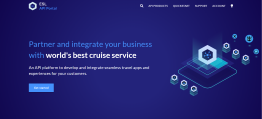Blogs
History
In 2004, Ravi Chandra and Rai Singh founded Sonoa System in Santa Clara of California. Sonoa had earlier appointed Kapoor Chet as CEO in 2006. The company initially developed a router like appliances for SOA/XML Governance. As time lapses, they would later divert into Cloud computing and Application platforms. As of 2009, Sonoa would release Apigee which was a public beta of an API management tool. Apigee provided app developers with a cloud-based platform. That platform provides analytics and security for their APIs.
Sonoa became re-branded as Apigee in 2010. The API management platform the big deal of the business and it wasn't long before premium features were added.
Apigee would later quickly expand its corporate customer base which includes the likes of Walgreen and Netflix.
Apigee acquired Usergrid, a Mobile API company, in 2012. In 2014, Apigee would acquire InsightsOne, which is a Predictive Analytics Company.
On the 24th of April, 2015, Apigee raised $88,000,000. This was done on the NASDAQ through a public IPO.
Apigee would then go under the sponsorship of Linux Foundation in 2015, where it, alongside IBM and SmartBear, became a founding member of the OpenAPI initiative.
On the 8th of September 2016, Google announced it would buy Apigee. The deal was completed in November of that same year for $625 million.
Products
Customers that are subscribed to Apigee also get additional functionality sold to them. Some of which the ability to monetize APIs, traffic isolation, PCI-DSS compliance, and multi-region deployment in Amazon Web Service. Apigee generates its money through subscription to its API management platform. Apigee also generates money by offering professional service to subscribed customers. Apigee product comes with a free trial and the premium features are accessible to subscribers
What is Apigee?
Apigee Edge is a strong and reliable platform that allows you to develop and manage APIs. Apigee provides an abstraction for your back-end service. It also provides analytics, rate limiting, quotas, security, and many more. Apigee edge achieves these functionalities by fronting services with a proxy layer.
If you're in need of an example then you can view a video about how Walgreen uses Apigee and APIs to offer a rich app ecosystem around prescriptions, photo printing along with other services they offer.
Components of Apigee Edge
Apigee consists of monitoring, analytics, API runtime, and developer services that collaborate to provide a complete infrastructure for API creation, management, operations, and security.
Apigee Edge Services
Its services involve creating and consuming APIs whether you're using SDKs, APIs, services as a developer, or building API proxies as a service provider .
Apigee Edge Developers Services (DEVELOPER ECOSYSTEM):
-
SmartDocs (Interactive Documentation)
-
Customizable (Portal Drupal, Turnkey Portal)
-
Self-Services (Sandbox, Key-management)
-
Client/SDK (Client/SDK Generation)
Apigee Edge Developer Services (MONITORING and ANALYTICS):
-
Business Report (Dashboards, 30+ canned reports)
-
Performance monitoring (Ops report, API Health Metrics)
-
Custom Report (Custom Dimension, Metrics)
-
Trace (Diagnostics, online/offline debug)
Apigee Edge App Services (API Runtime):
-
API Gateway (Cache, API design, Governance, Mediation, Routing, Versioning, Throttling)
-
Connectors (Enterprise App, Database and Cloud App)
-
Programmability (Python, Java, Javascript, Node.js, Serverless)
-
Federated Runtime (Hybrid, On-premises, Cloud)
-
Security (OpenID Connect, JWT, Threat protection, SAML, RBAC, integrate with 3rd party IdP, TLS token-binding, OAuth 2)
-
API first (Analytic APIs, Management)
Flavors of Edge
Apigee Edge comes in varieties of flavors which can be:
Apigee Hybrid: This allows you to manage APIs on Google Cloud Platform (GCP), on-premises, or a combination of both.
Public Cloud : This is a hosted SAAS version where Apigee maintains the environment. It let you focus on building your services. It also allows you to define the product to those services.
Private Cloud : This is an on-premise installation that allows you to control the hardware environment. You're also responsible for the installation, maintenance, and upgrade.
Functionality : As pertaining to their functions, the Apigee Hybrid, Public Cloud, and Private Cloud are all very similar. Nevertheless, the version of the Private Cloud supports the features of the Public Cloud.

